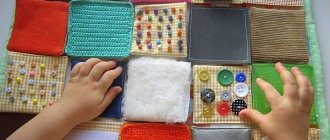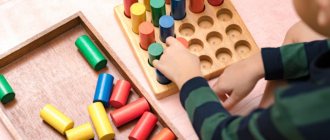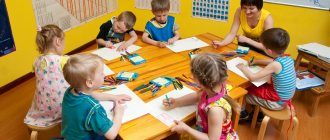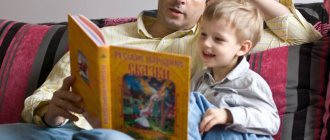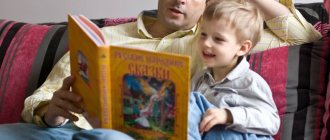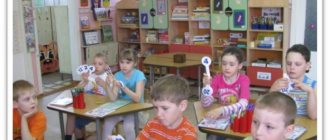The beginning of the twentieth century literally divided the history of mankind into before and after, because life underwent incredible changes and required new moral guidelines, approaches to education and upbringing, and the organization of work and leisure. It was a period of bold experiments and amazing discoveries. Despite all the social upheavals, people of the twentieth century became freer and more progressive, which means that upbringing and education had to change a lot, because kids had to grow up in a completely new world.
The observations and innovations of the Italian doctor Maria Montessori became a real breakthrough in pedagogy, since her approach simultaneously had both a good theoretical basis and brilliant results in practice. In this article we will try to highlight all the main features of Montessori education and discuss for which children classes using the M. Montessori method are best suited.
Basic Montessori Methods
To briefly outline the main ideas of the Maria Montessori method, it is important to first explain on what beliefs the approach is based:
1. The child develops following his natural interests and thanks to the experience independently gained on their basis,
2. Only a well-organized environment allows a child to fully realize his development potential,
3. An adult can be a guide and assistant, but cannot become the only full-fledged source of knowledge and skills for the development of a child,
It is these beliefs that determine the style of interaction between children and adults who have chosen the Montessori method for their children.
The approach is distinguished by a specially organized environment (didactic material freely accessible to the child), appropriate to the age of the children; the child’s leading position, his independence and free choice of activities; respectful and attentive attitude of adults to the individual needs of the baby.
Let's briefly formulate the basic principles of the Maria Montessori method:
1. Lack of a classroom system and free movement of the child in the classroom space,
2. The absence of a unified program and compulsory curriculum for all pupils, an individual approach to each child,
3. Classes using the M. Montessori method are held in a group of different ages,
4. Any Montessori session requires a prepared environment, ordered and varied materials for learning,
5. The adult follows the child’s interest, observes the children’s work and is very limited in their independent activities.
Now let's study in more detail the features of the Montessori method and start with what goals a Montessori teacher faces depending on the age of the students.
Goals of lessons using the Montessori method by age
The approach provides education for children from birth to secondary school, while the focus of attention, and therefore the techniques used in a Montessori environment, depend on the age of the child. Below we offer a table that outlines the main goals of Montessori education for children at different age stages.
| Child's age | Goals of Montessori education | Basic techniques and formats |
| From birth to three years |
|
|
| From three to six years |
|
|
| From six to twelve years |
| A comprehensive study of the experience accumulated by humanity and more specialized classes devoted to the study of the universe, wildlife, humanity, language and the world of exact sciences |
| Twelve to fifteen years old |
| Unfortunately, the methodology was not developed by Maria Montessori herself, however, followers of the approach actively use group work, scientific discussions, individual educational plans and practical work for the personal and professional development of adolescents |
Even from this table it is clear that the development of a harmonious personality must certainly begin at a very early age, which is why Montessori teaching methods are used primarily in preschool institutions, because in the future Montessori graduates are much more adaptive and achieve better results in schools of a variety of approaches.
First of all, the essence of the Montessori method for children of all ages is education based on the individual strengths and interests of each child. Montessori education encourages children to explore the world around them and find their own place in this world.
Montessori method - for which children is this approach suitable?
Surprisingly, we often meet parents who are convinced that Montessori teaching methods are only suitable for gifted and “naturally” motivated children. Parents feel that if their son or daughter is not forced to study, they will simply lie on the couch all day.
In fact, it is always worth remembering that children’s curiosity and desire to explore the world are an innate quality of absolutely any child. The described passivity is most often caused by external factors: an unsuitable environment and an incorrectly organized daily routine, incorrect behavior of adults, and poor health of the child.
Despite the fact that all Montessori techniques involve the child’s free choice and almost unlimited movement around the classroom, even the most “uncontrollable” and “difficult” children eventually successfully integrate into the process.
However, if you think that at first it will be difficult for your baby in group classes using the Montessori method or you are worried about some of the child’s health, all branches of our club offer individual lessons so that your baby has additional adult attention for easier adaptation to a new environment.
Reviews and comments
What do you think about the Montessori method? Are you a supporter or an opponent? Share in the comments to this article. It will also be interesting to know about your experience of raising a child using such a system.
We also recommend reading:
- Storytelling
- Piaget's theory of cognitive development
- Socialization of personality: briefly about the main thing
- Koos Cubes
- Teaching ideology of Leo Tolstoy
- How to teach a child to read: rules, tips and tricks
- TRIZ classes for children: raising geniuses and simply happy people!
- How to raise a child correctly?
- Pamela Druckerman "French children don't spit food" - summary
- Factors in a child’s intellectual development
- Alternative education: advantages and disadvantages
Key words:1Children
Montessori kindergarten - what to expect from classes using the well-known method
The Montessori method is in demand both at school and in preschool institutions. However, in Moscow, most often, classes using the Maria Montessori method are designed for children up to 6-7 years old, after which they successfully transfer to both specialized Montessori schools and general education institutions. Taking into account this peculiarity of Moscow education, we have developed both a program exclusively based on the Montessori method, and groups where Montessori teaching methods and its basic principles are organically combined with more traditional formats of classes for children, as well as visits to a speech therapist and other specialists.
The environment of Montessori kindergartens stimulates children's cognitive activity. All Montessori classes are divided into zones: practical life, sensory, language, mathematics, space (the world around us), creativity. Each zone is filled with a variety of educational objects and didactic games, by interacting with which the child independently studies the properties and functions of things and learns new things.
In a Montessori kindergarten there is always a lot of space and educational materials, children always have the opportunity to choose an activity to their liking, and kindergarten teachers who have undergone special training in the Montessori method only help children make independent discoveries.
A pleasant bonus for parents who have chosen a kindergarten using the Montessori method will also be the availability of regular consultations for parents, at which teachers and child psychologists explain in detail the objectives of the method, share the successes of their students, and also give recommendations on education using the Montessori method. Houses.
A little history...
The founder of the famous technique is the first woman in Italy to master the profession of a doctor. Working with children with developmental disabilities, the author developed her own rehabilitation course, which was highly appreciated in the teaching community.
In 1907, the “Children's Home” opened its doors for the first time for healthy preschoolers and schoolchildren. It was in this institution that the very methodology that we are talking about today was applied.
Subsequently, the method became widely known - Montessori gave a large number of lectures, published several unique books and many teaching aids. Preschool educational institutions appeared all over the world in which teachers used this method, and a little later experimental schools appeared. For more than a hundred years, it has remained at the peak of popularity among parents and teachers.
conclusions
Education according to the Maria Montessori method is qualitatively different from traditional approaches: an adult does not teach lessons and does not require them to put their hands on the desk and listen carefully, children have the opportunity and time to learn what is interesting to them, and a specially organized environment ensures that “interesting” “was always “useful.” Thanks to these conditions, the method has received international recognition, graduates of Montessori gardens consistently demonstrate interest in learning, developed self-control skills and successfully master the school curriculum, and parents are proud of their talented, independent and truly happy children.
Don't regret missed opportunities
The situation when a person looks back and evaluates his decisions and actions in a completely new way from the height of current experience is inevitable for any person. This also applies to raising children.
Everything we do affects other people, and there is always a wiser or simply different way to act. It is very important to keep yourself from the illusion that it was possible to act differently in a past situation. Our ability to extend our attention to the events of the past and imagine a possible future (and for the company, a possible past) plays a cruel joke on us. Instead of changing the future, we get stuck in futile attempts to change the past. With particular ease, we get stuck in this unproductive state when the past concerns our loved ones, those who depend on us.
But the truth is, if you could do better, you would. At that point in his life, that person, with his life experience, in his condition and those circumstances, came to the best course of action possible for him. The feeling of guilt is born from the erroneous feeling that there, in the past, you could have behaved like you now, but did not. This is not true, and therefore guilt always goes hand in hand with feelings of powerlessness, helplessness and despair.
This does not mean that analyzing the past is useless or harmful. It’s just important to focus on how the past affected the present. You have the power to accept responsibility for the consequences of your past actions.
You can use your new understanding of the past to:
- act better in similar situations;
- know what you are dealing with in the present.
The impact of our actions here and now often depends on our background. In particular, if we understand what triggered certain characteristics in our child, we can plan further parental actions that will help the child make the most of the current state of affairs as an advantage and the ability to somehow compensate for weak or excessive qualities.
